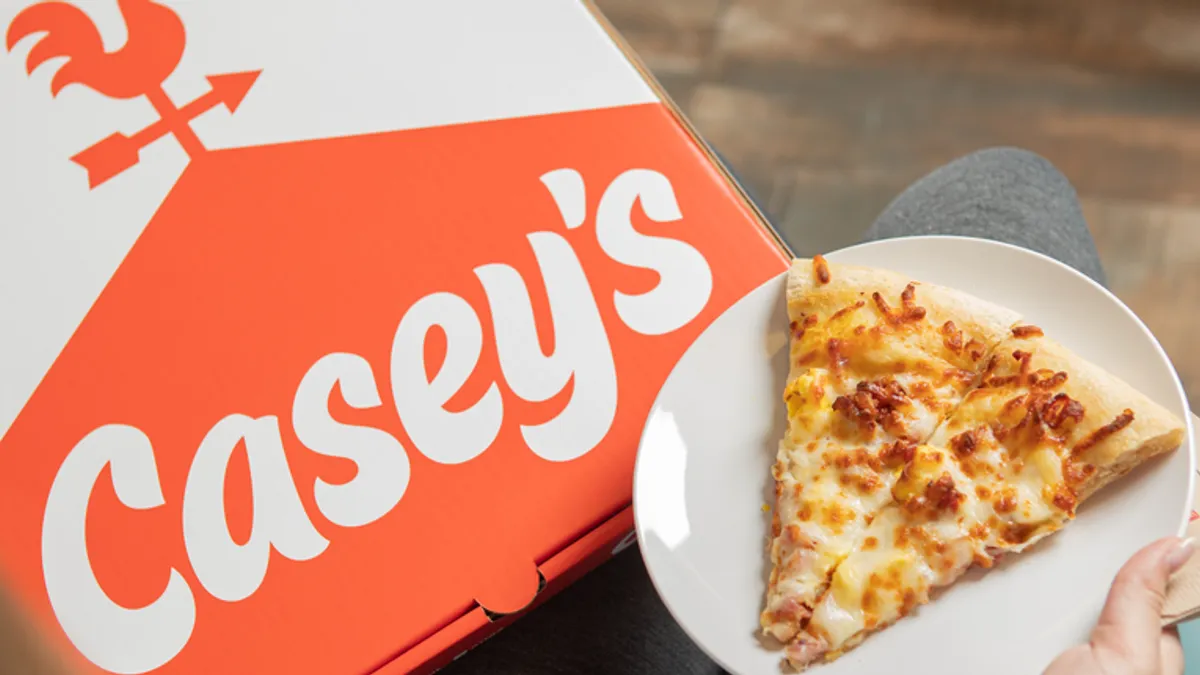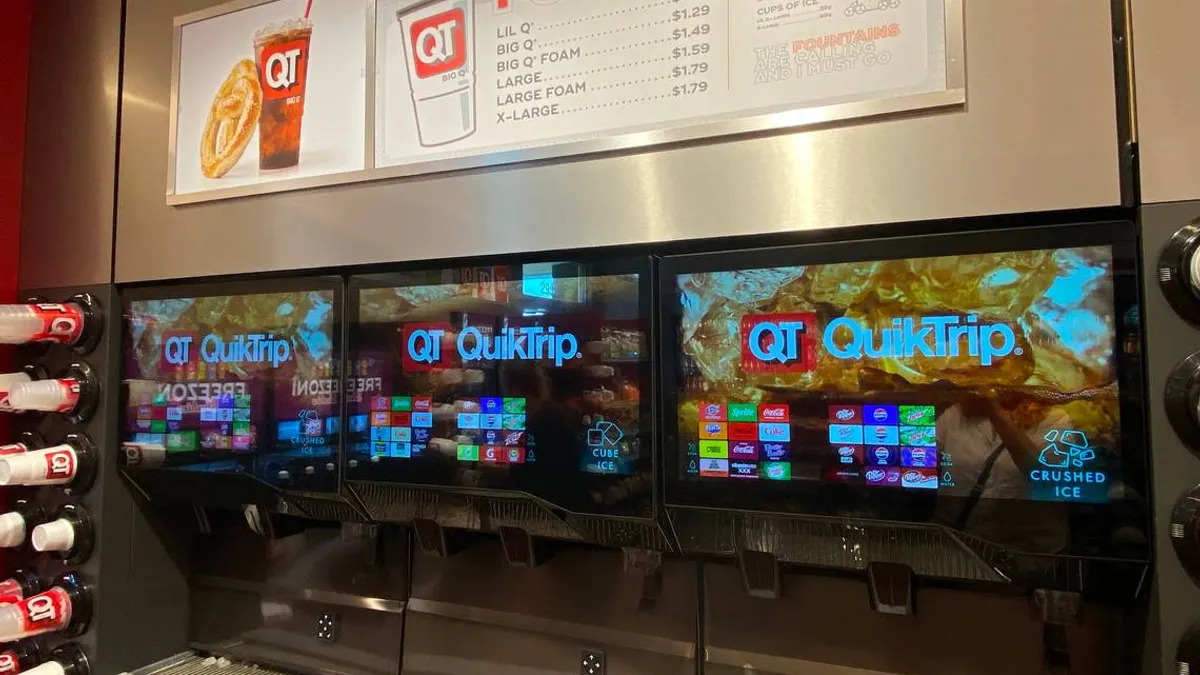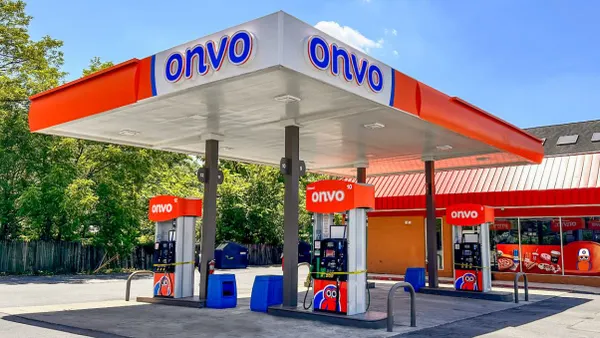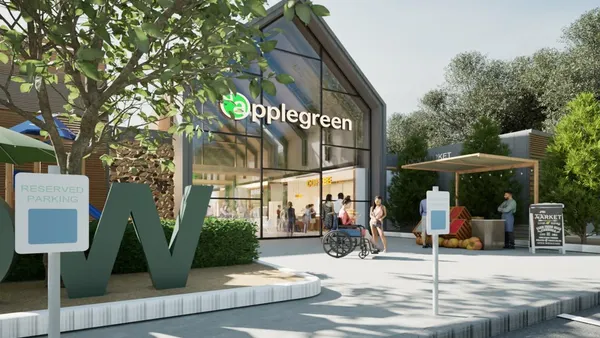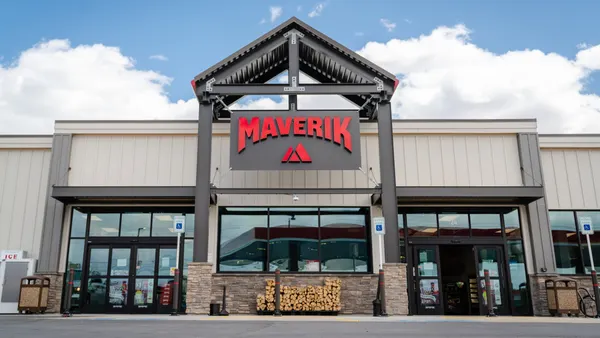When Art Sebastian joined Casey’s General Stores in 2018 to lead the company’s digital transformation efforts, there were only two people on the digital team.
Today, when including outside partners who help Casey’s on the digital side, that number hits nearly 90.
“A lot of people ask me, ‘What does it take to get all this done?’” Sebastian, vice president of digital experiences for Casey’s, said in an interview. “We’ve built up a fairly large team of marketers, engineers, product management people, commerce people, and I’m proud of the team that we’ve built.”
Casey’s, which operates more than 2,400 convenience stores in 16 states, will surpass 6 million loyalty members before the end of the calendar year, Sebastian said. The company has spent the past few years building and improving the digital ordering experience for its flagship pizza operation; implementing new technologies and customer-facing experiences; and even tapping into artificial intelligence to enhance its shopper insights.
Sebastian recently sat down to talk about the strategy behind Casey’s digital operations, where he sees Casey’s transformation efforts headed as 2023 approaches, how other c-sore retailers can boost their digital experiences and much more.
This interview has been edited for length and clarity.
C-STORE DIVE: Can you talk about Casey’s digital transformation efforts, which you’ve been working on the past few years? How did this initiative originally get started? What was the mindset behind it?
SEBASTIAN: I joined the company four years ago, and at that time, we were just at the start of the company's overall transformation. We celebrated 50 years as a business, but took some time to reflect and really challenged ourselves to modernize the brand to be relevant for the next 50 years.
The talk track we gave ourselves was, “How do we become a bigger, better, more contemporary version of ourselves?” There was a lot to like about Casey's over the last 50 years, but we just weren't modern in the way that consumers expected.
When I think about a competitive set, I don't rattle off other convenience store chains — it's just not what I think about. I think about companies like Facebook and Instagram, like Netflix, Chase Bank and Starbucks. Those types of companies set the stage for how consumers want experiences. So we declared that we were going to take on a digital transformation.
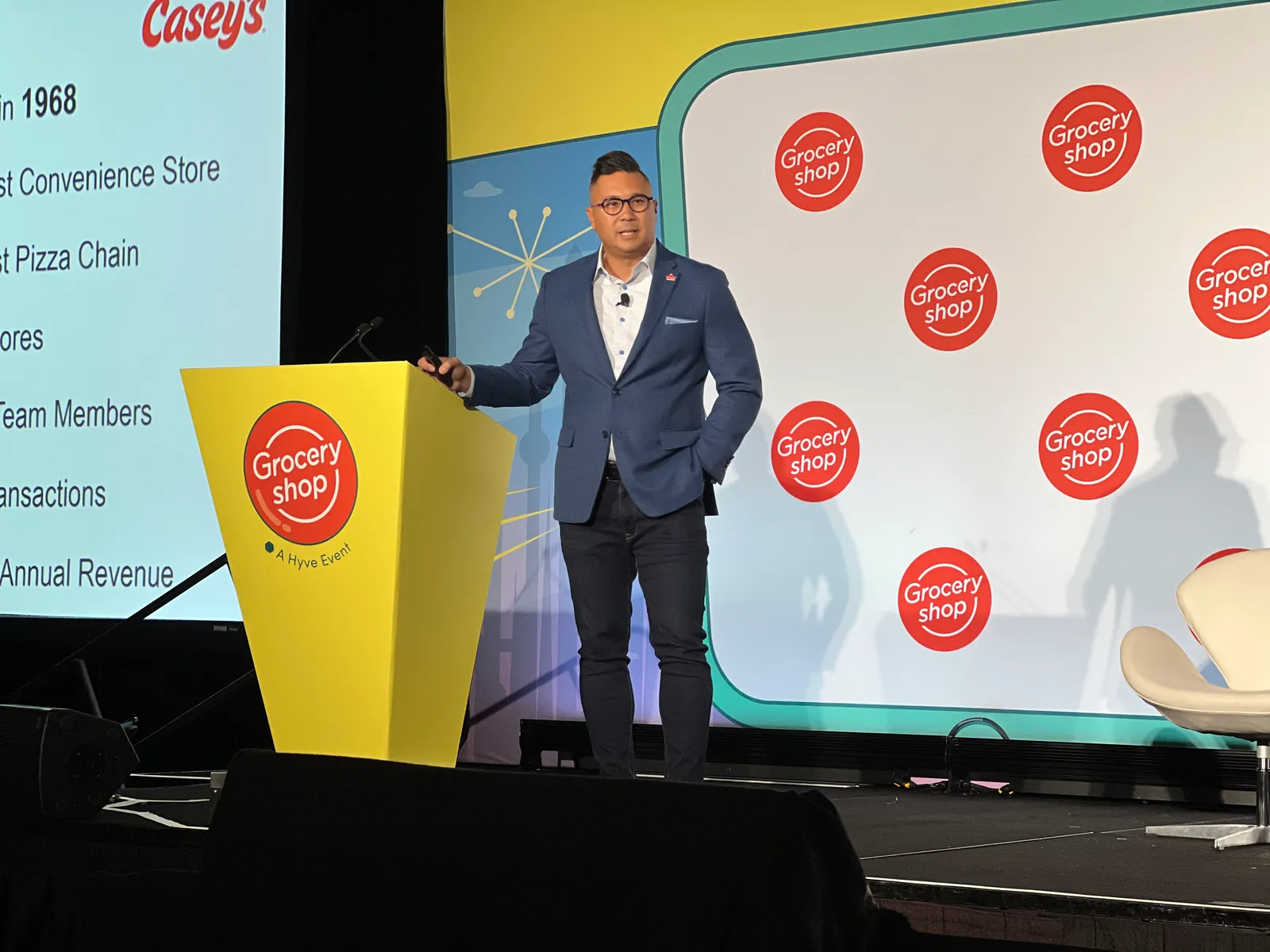
You said you were comparing yourself to the Starbucks and Facebooks of the world. What were you seeing in those companies that you hadn't really seen compared to other c-store competitors?
SEBASTIAN: It's no secret that in retailing, c-store is behind, from a technology and digital experience. When you look at companies like Best Buy and Nordstrom and Macy's, these guys have been omnichannel for years. And I've got 20 or so years as a grocery guy. So when you look at Kroger, Albertsons — where I spent the early part of my career — H-E-B, Meijer, Publix, these guys have been on their digital journeys over the last decade.
Really, convenience retailing just got started in the last four to five years. I would say humbly, we're in the leading pack, and we just started four years ago. When we look at those other companies, they have ordering, they have loyalty, they have delivery, they have curbside. They have apps that are easy, that are fast, that are intuitive. They have engagement. They're connected across their app experience, to their social media personas to the way they communicate to how they look at brick and mortar.
We were very much operationally driven — stack-it-high watch-it-fly in the store, serve your guests, keep the store clean. We were that type of company, and really weren't leaning into digital much at all.
How is Casey’s planning to accelerate its loyalty program, which has been a big focus for the past couple of years?
SEBASTIAN: What makes us stand apart is we deliver on what our guests have told us they want. You can spend on anything at a Casey’s and earn points, and then those points can be converted into one of three things: Casey's cash, which is essentially currency; fuel discounts, which we know how important it is given the inflationary environment; or donations to local schools of your choice — we have 35,000 schools loaded in the mobile app.
The fact that you can spend on anything and have the freedom of choice to decide how you want to convert those points makes our program stand apart from anyone else. I won't pick on anyone, but a lot of programs out there are like, “redeem for your free fountain soda,” or “get free chips and guac.” Well, what if I don't drink fountain soda? What if I don't like chips and guac? We're about giving our guests the freedom to make those choices.
We are actively working right now to sort of refresh our program. What that will entail is a user interface and user experience upgrade. We're going to add new features and functionality that our users are telling us they want. That’s being developed and engineered right now. And I think what's most important — what I get most excited about — is we're refreshing the market positioning of Casey’s Rewards, which will then come to life with increased advertising. It’s a way to put it out there and for existing members, get them really excited about being part of the program, and then get our non-members interested in actually enrolling in the program.
With advertising, can you elaborate on that a little bit?
SEBASTIAN: We full-funnel advertise. So at the top of the funnel, we're doing TV, radio, outdoor billboards, earned media, PR, event marketing. And as you move into the funnel — when we get consumers onto our property — we're using signage, digital screens, digital menu boards, fuel pump screens.
The other piece is all of our digital advertising, so think paid media. Display ads, display videos, SEM, SEO, paid social — all of that is paid digital media. When you go further in the funnel, we're talking to our subscriber base — email, [text message] app push, in-app message, app inbox. And then at the final area of the funnel, the bottom of the funnel, that's our Casey's Rewards members. They are our guests — they’re part of the program, they’re subscribers, they’re highly engaged.
In general, why do you think c-stores trail other sectors, like grocery and restaurants, when it comes to consumers using its loyalty programs? What does the industry need to do to improve here?
SEBASTIAN: One, I think they need to get in the game. But the other piece is how do you stand out in a crowded loyalty space? We've done some research and we've asked consumers in general, “Why don't you join loyalty programs?” They don't want to download another app, they don't see the benefit because they don't shop [at the store] as much, or they don't know what they'll get out of it. It’s a bunch of these things that I think a convenience retailer can address early on by being very thoughtful.
You’ve got to think through “How do you stand apart? How do you create differentiation?”
In 2019, you relaunched your mobile app, which lets customers find a store, customize their pizza and place an order. How has relaunching your mobile app impacted your pizza operations and overall customer experience?
SEBASTIAN: We have grown our pizza business significantly. Our whole pie and slice business is a big portion of our prepared food business, which is a third of our company's profit.
During the COVID-19 timeframe, we saw acceleration in whole pies — like all the major pizza players did — but that hasn't let up for us. We have a couple trackers where we look at our performance in our pizza business comparable to the industry leaders — Domino's Pizza Hut, Papa John's, Little Caesars — and we're outpacing them from a same-store sales perspective, which we're really proud about.
We've got high-quality [pizza], and we're priced right. So the mobile app was a way to complement our really high-quality product with accessibility. You can order it anytime, anywhere. Easy to pay, saved credit cards, favorite orders — all of that is built into the app. And we augmented that with not only in-store pickup at almost 2,500 stores, but curbside pickup and delivery in almost 2,500 stores. We made it super easy for our guests to order pizza.
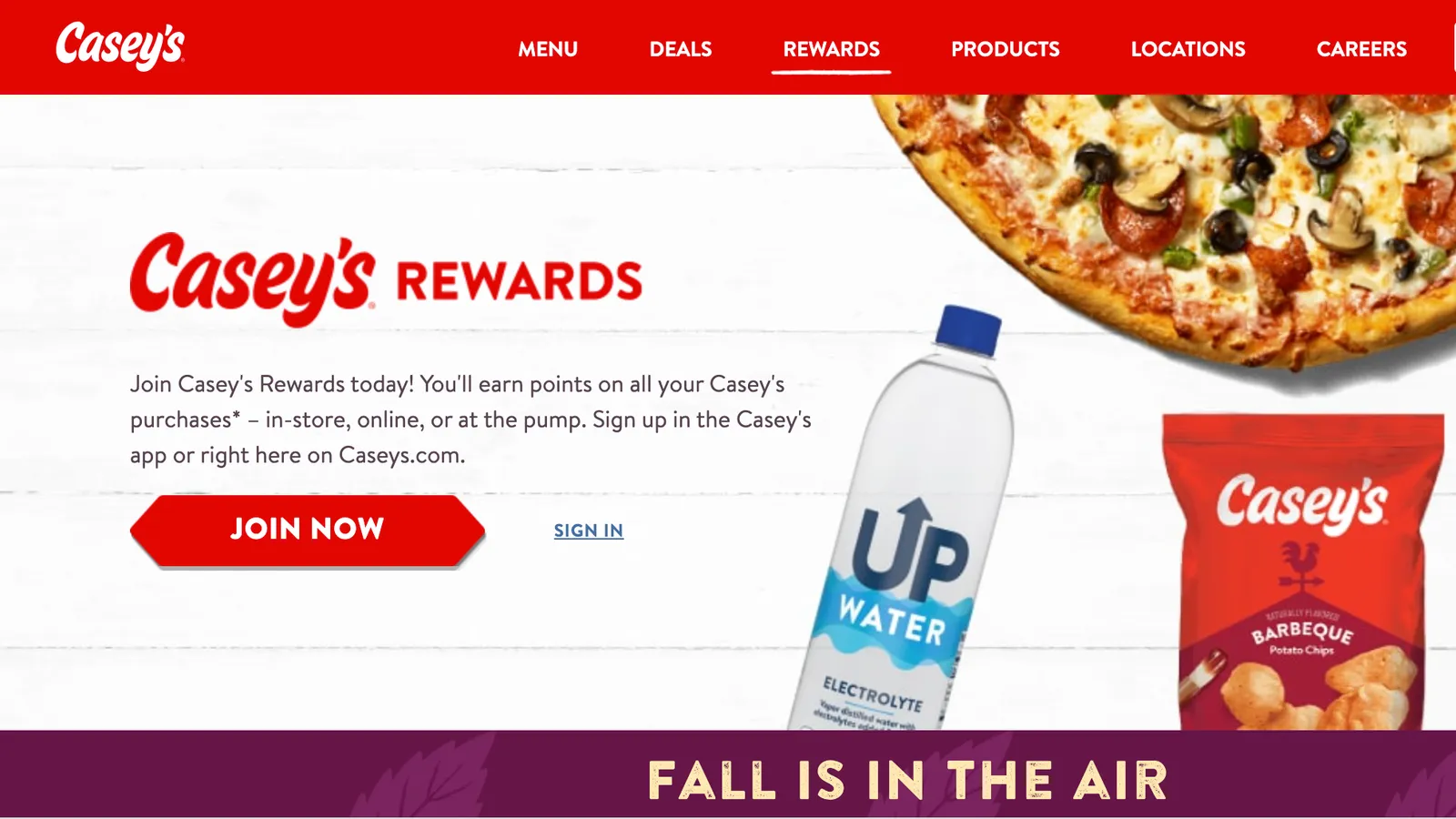
Where do you see room to improve your existing online or mobile ordering platform?
SEBASTIAN: We're extending the assortment. We started with pizza, then we added all of our sides, like breadsticks and wings and all of that. Throughout the pandemic, we added grocery items because we saw this need for snacks and beverages. But then we extended it to convenient grocery items, everything from packets of ramen soup to cereal to milk to eggs, water, all those types of things. So now we've got this full range of whole pies and complimentary sub salads and sides and wings, but we've got grocery [items].
In the last several months, we added beer. So we do beer for pickup at almost 2,500 stores. We do beer delivery in almost 1,000 stores where the states allow us to. We're going to continue to expand our age-verified assortment — just make it easier to order other age-verified items, like spirits, wine and, overtime, tobacco products, when we're ready.
And then one of the things that we'll be launching here shortly — we're already live with a pilot — is our breakfast occasion. We have breakfast pizza that has always been available for order, but we're actively piloting it in about 90 stores, with breakfast sandwiches for order. We're seeing that business spikes as people are looking for different morning options – they’re working from home, so they're ordering it for delivery.
During the recent NACS Show, you mentioned that Casey’s is using customer data to increase personalization in stores. Can you talk about this initiative a bit, what type of customer data you’re collecting and how you collect it?
SEBASTIAN: If you think about your relationships that are most important to you, whether it's your spouse, your kids, your family members, your best friends, those are real relationships. They're deep, and they're deep because you know each other, you know how to treat each other, you try to make each other happy, you anticipate each other's needs. It's a two-way relationship. We are doing the same thing with our customers and have that same type of relationship with them.
We tell them about who we are by how our brand shows up through the various communications, messaging promotions, the store experience — that's our way of saying “Here's who we are.” Our customers then tell us who they are by joining our rewards program, which then allows us to access their purchase behavior.
We're leveraging all that data to tailor the experience for those customers. The most simple things are when we send you an email, we call you by name; we add your last order or your favorite order so you're one tap away from placing that order; we embed your home store; we suggest items or offers based on your purchase behavior.
[Then] you start to think about how we use that data and technology to serve up even more — when we're running a single-pie promotion, we're going to show you the pie you buy most frequently. So, Brett may see pepperoni pizza, Art may see taco pizza. The data is about “How do you build this relationship through relevancy and personalization?”
If I were a retailer who wanted to start using customer data to increase personalization, but didn’t know where to begin, what would you tell me to do as a starting point?
SEBASTIAN: If I were a smaller operator, I would look at what leading companies like Casey's and others are doing and think about “How do I develop this myself?”
You don't need a big consumer insight or research budget — you need to get on the sales floor and talk to your customers. So I think you can do that. At Casey's, we would invest in technology to build an e-commerce business so that we give our guests more ways to shop. But look, if I have three stores, I'm probably not going to do that. Maybe I'll tap into Instacart’s white-label application, or I'll get on to DoorDash’s marketplace. There are ways for you to tiptoe into e-commerce without investing heavily in technology.
And then I want to build a loyalty program. There are white-label applications out there. There are companies that have differentiated pricing for small and medium businesses that can get you into the loyalty program. And you can negotiate ways to pay as you see value versus just coming out of pocket with a bunch of dollars for technology that you haven't proven out yet.
I’d put thought into, “What's most important to me, and how do I get started either grassroots or lower investment.” And then as you get ROI, you can put some of that investment back in and start to really step it up from a tech perspective.

You also spoke at NACS of how Casey’s is in the early stages of using artificial intelligence (AI) to help send timely offers to members. Can you talk about how Casey’s is exploring AI, the different ways you’re using it, and why you took the jump to get into it?
SEBASTIAN: There's two ways we're using it: one is in our marketing, the second is in our ordering.
With our marketing, we've been doing this for well over a year now. We're leveraging artificial intelligence to optimize our message send for our email subscriber base of more than 5 million people. We know what time you open up your emails and we segment you in specific audiences, and the AI technology will send those emails at that time that you're more likely to open it. You may be part of a million people who tend to read your emails in the morning before you head out to work. I may be part of 700,000 people who tend to read their emails at 9:30 at night when I'm trying to go to bed. It's called time send optimization. No marketing employee would have the skill or time to plot that all out, so we use AI to do that.
Another really cool thing that we do is what I would call content optimization. We're using AI to build email templates with various bits of copy. If we send an email to 5 million people with a promotion, but in the background we've set up different sets of copy or subject lines, the AI is looking at — in real time across three different emails with three different subject lines — which subject line is getting the most open rate. If you haven't opened up your email yet, but we sent it 48 hours [ago], that's 48 hours of open-rate intel that the system has — and it is changing what your subject load time is based on what is trending to drive open rate.
I don't know if that makes sense to you. But we push the button and send the email, and we're changing it every minute before you open it based on what the AI is telling us is driving open rates. Overall, our open rate has improved. Our click-through rate and conversion rate has improved.
The second area that we're launching AI is called voice AI. We have been working to train natural language processing (NLP) on how to take orders for pizza. But we still experience over 10 million telephone calls a year to order pizza. However, what we've seen is that we're missing phone calls because the phone's busy, because team members aren't answering — whatever it is, we're missing phone calls. And we've also seen that our phone call experience is inconsistent. We have 16 states where we have stores, we have 43,000 team members. There are so many variations of experiences you can have, so they're inconsistent. So as we install this voice AI, we will answer every phone call. Right off the bat, you see a sales increase, because we’re capturing every call. That customer service experience is consistent because we're training the NLP to deliver that experience.
Today, we see a higher average order value in our digital orders versus telephone orders. We're excited to launch that in a pilot right after Thanksgiving.
What’s something you’re excited about from a digital transformation perspective as we head into 2023?
SEBASTIAN: The most exciting thing on my mind is something I can't talk about for three weeks. So I'll have to put a plug in that.
So aside from that, the other big thing I'm super excited about is digitizing our store and team member experience. It’s no secret that labor is challenging, turnover is challenging. I’m on this mission to make working in our stores easier.
Think about any experience you have — it’s manual, it takes too much time. We’re going to digitize that experience over time using custom-built applications on zebra handheld devices or tablets; helping our team members operate the store and serve our guests; and manage their careers much easier than it has been in the past.
I think we’ll drive employee retention, but we’ll also create labor slack because of the time savings that will, in turn, allow those team members to serve our guests better.



